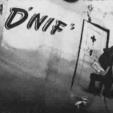https://fred.stlouisfed.org/series/GFDEBTN
Sadly, the true best-case scenario would be for rates to stay just high enough to exert such extreme pressure on the global financial system that the world is forced into a very painful, but survivable, bad-debt detox. Laughably, that rate would probably only be about 3%.
Looking at the chart above, it took from the founding until 1981 to get to $1T of debt. $1T in 2023 dollars is $3.4T. But remember, a debt gets cheaper due to inflation. This fact will matter in the years ahead.
It took from 1981 to 2008 to get from $1T to $10T. 27 years for $9T increase
From 2008 - 2018 it went from ~$10T to ~$20T. 10 years for a 10T increase
From 2018 to now it went from #20T to $33T, with an additional $1.9T of additional debt planned for the second half of 2023, so lets say ~$15T of additional debt in 6 years
The trajectory is parabolic. And keep in mind, we have never had such a high deficit-to-GDP ratio outside of wartime. If the government is taking on this type with record-low unemployment and record-high tax receipts (from 2021 and 2022), what do you think it will look like when the economy just slows down a little?
So, the debt is spread out over a range of Treasury bills, notes, and bonds (just called "bonds" for now) ranging from a few weeks to maturity to 30 years. Because we only exist in a deficit now, when a bond matures, the government must issue another to cover the payout of the maturing bond. In the corporate world this is called rolling over the debt. When you do this, the new bond must be issued at whatever the prevailing interest rate is.
https://fred.stlouisfed.org/series/DGS30
Click "max" on the chart to see the full series. You'll see that the yield on bonds has been steadily dropping for just under 40 years. That means every time the government had to pay out a bond, they were able to cover it with a cheaper bond. Imagine if every month your car payment went down through no effort of your own. You'd probably use the extra money each month to buy something else. So too did the government.
The problem with a normal yield curve (the chart that shows the various interest rates of the increasing bond durations, click here) is that its usually cheaper to give out shorter-term bonds than longer term bonds. So in 2019-2020 when the government could have been issuing 30 year bonds at less than 2% to fund the government, they instead chose a whole lot of < 2year bonds yielding less than .25% (a quarter of a percent!), because lower is better, right?
Well now the best rate they can get is 4%, which is devastating when you have to roll over trillions in debt from .25% to 4%. This article explains it well, but I'll include a couple highlights:
"Net interest payments on the national debt rose from $352 billion in 2021 to $475 billion in 2022 — the highest nominal dollar amount in recorded history."
"Much of that increase was due to higher interest rates on U.S. Treasury securities. Although borrowing rose sharply over the past few years to address the COVID-19 pandemic, interest costs were muted as a result of low interest rates."
"Interest costs represented about 8 percent of total federal outlays in 2022. By 2033, that share will rise to 14 percent and will exceed programs such as defense and Medicaid."
Keep in mind, the article uses CBO estimates which are grossly optimistic, and always wrong. Always.
So basically, with interests rates anywhere above 1%, we have an unsustainable debt spiral. It's not just us. The EU was using negative interest rates to support their insane deficit spending. China plowed trillions into worthless ghost cities.
Now you might ask, why doesn't the Fed (and other central banks) just lower interest rates if they are so devastating?
Inflation. The great destroyer. Inflation is great for governments. It turns big debts into small debts. Ever wonder why the Fed targets 2% inflation instead of 0%? It's because they long ago realized that governments operating under fiat currency will never pay down their debts. But if you let inflation slowly erode the value of a dollar, you can keep the debts manageable, if you manage to keep the growth of the debt under the growth of the economy. We haven't.
Unchecked inflation is the quickest way to social upheaval. Not just because people see their purchasing power decline, but because government money-printing always disproportionately goes to the already-rich and connected. Take a look here.
Pay close attention to the differing slopes. Also notice that the runaway increase at the top coincides with the Fed interventions in 2002 (tech bubble popping), 2008 (quantitative easing from the Global Financial Crisis) and 2020 (Covid crash).
So when inflation really comes to eat our lunch, and it hasn't yet, a 50% decrease in purchasing power is going to hit the bottom lines a lot harder than the top lines. You want a civil war? This is how you get a civil war.
And overwhelmingly, all of this madness was brought to you by a federal reserve that decided that artificially-low interest rates would help government spending spur economic growth, and a congress that was all too happy to increase their spending ability through the roof, while telling the American people that it was actually good for the economy for the government to spend this way. Keynesian economics reaching it's only logical conclusion: collapse.
Buckle up, kids. It's going to be an interesting decade or two.
















